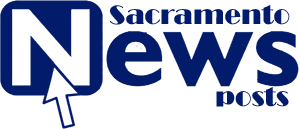In the modern digital landscape, Managed Service Providers (MSPs) play a crucial role in maintaining the IT infrastructure of businesses. One of the core functions of MSPs is Remote Monitoring and Management (RMM), which enables them to oversee, manage, and support client systems remotely. With the growing complexity of IT environments, choosing the right RMM software becomes essential for delivering efficient and effective services. This article explores nine of the best MSP software solutions for remote monitoring and management, highlighting their features, benefits, and potential drawbacks.
SolarWinds Remote Monitoring and Management
Overview
SolarWinds RMM is a comprehensive solution designed to streamline IT management tasks for MSPs. It offers robust features that cater to various needs, from monitoring and alerting to remote support and automated patch management.
Key Features
- Remote Access: Secure remote access to client devices for troubleshooting and support.
- Automated Monitoring: Continuous monitoring of network devices, servers, and endpoints.
- Patch Management: Automated patch deployment for operating systems and applications.
- Backup and Disaster Recovery: Integrated backup solutions with disaster recovery options.
- Reporting and Analytics: Detailed reports and analytics for performance insights and client communication.
Benefits
- Ease of Use: Intuitive interface with straightforward setup and configuration.
- Scalability: Suitable for small to large MSPs with scalable options.
- Integration: Supports integration with other SolarWinds products and third-party applications.
Potential Drawbacks
- Cost: Can be on the pricier side compared to some competitors.
- Complexity: Advanced features may require a learning curve for new users.
ConnectWise Automate
Overview
ConnectWise Automate is a powerful RMM solution that focuses on automating routine tasks and improving operational efficiency. It provides a range of tools for monitoring, managing, and securing client systems.
Key Features
- Automated Scripts: Create and deploy scripts to automate routine maintenance tasks.
- Remote Control: Access and control client devices remotely for quick support.
- Network Monitoring: Real-time monitoring of network performance and device health.
- Asset Management: Track hardware and software assets with detailed inventories.
- Help Desk Integration: Seamless integration with ConnectWise's help desk and ticketing systems.
Benefits
- Automation: Reduces manual intervention with powerful automation capabilities.
- Customizable Dashboards: Tailor dashboards to display relevant metrics and information.
- Comprehensive Support: Extensive documentation and support resources.
Potential Drawbacks
- Interface Complexity: The user interface may be overwhelming for new users.
- Pricing: Can be expensive, particularly for smaller MSPs.
NinjaRMM
Overview
NinjaRMM is known for its user-friendly interface and straightforward deployment. It provides essential RMM features with an emphasis on ease of use and rapid deployment.
Key Features
- Dashboard: Clean and intuitive dashboard for managing and monitoring client systems.
- Remote Support: Built-in remote support tools for quick issue resolution.
- Patch Management: Automatic patching for operating systems and applications.
- Endpoint Protection: Integrated antivirus and endpoint protection features.
- Automation: Script automation for routine tasks and workflows.
Benefits
- User-Friendly: Simple setup and easy-to-navigate interface.
- Efficient Monitoring: Effective monitoring with real-time alerts and notifications.
- Support: Responsive customer support and extensive knowledge base.
Potential Drawbacks
- Limited Advanced Features: May lack some advanced features found in other RMM solutions.
- Customization: Limited customization options for dashboards and reports.
Atera
Overview
Atera offers a comprehensive RMM and PSA (Professional Services Automation) solution, providing tools for both remote management and business operations. It is designed to help MSPs manage their services efficiently.
Key Features
- Unified Platform: Combines RMM and PSA functionalities in one platform.
- Remote Access: Secure remote control and support for client systems.
- Automated Monitoring: Continuous monitoring with automated alerts and notifications.
- Billing and Invoicing: Integrated billing and invoicing tools for managing client accounts.
- Customizable Reporting: Create and customize reports to suit specific needs.
Benefits
- All-in-One Solution: Integrates RMM and PSA functionalities, reducing the need for multiple tools.
- Flexible Pricing: Subscription-based pricing with no per-device charges.
- Automation: Automation features for routine tasks and processes.
Potential Drawbacks
- Learning Curve: Some users may experience a learning curve due to the platform's breadth of features.
- Support: Customer support may vary in responsiveness based on the subscription plan.
Kaseya VSA
Overview
Kaseya VSA is a robust RMM platform known for its extensive features and scalability. It is designed to meet the needs of MSPs and IT departments with a wide range of functionalities.
Key Features
- Remote Control: Full remote access and control of client systems.
- Patch Management: Automated patch management and updates.
- Network Monitoring: Comprehensive network monitoring and performance management.
- Backup and Disaster Recovery: Integrated backup and disaster recovery solutions.
- Security Management: Tools for managing and enforcing security policies.
Benefits
- Scalability: Suitable for both small and large MSPs with scalable options.
- Feature-Rich: Extensive set of features covering various aspects of IT management.
- Customization: Highly customizable to fit specific business needs.
Potential Drawbacks
- Complexity: The extensive feature set can make the platform complex to use.
- Cost: Higher pricing compared to some other RMM solutions.
Datto RMM
Overview
Datto RMM is a cloud-based RMM solution designed for MSPs with a focus on reliability and security. It offers tools for monitoring, management, and disaster recovery.
Key Features
- Remote Monitoring: Continuous monitoring of systems and networks.
- Remote Access: Secure remote control for troubleshooting and support.
- Automated Backups: Integrated backup solutions with easy recovery options.
- Patch Management: Automated patching for operating systems and applications.
- Security: Comprehensive security features, including antivirus and firewall management.
Benefits
- Reliability: Known for its reliability and uptime, with a focus on secure operations.
- Integration: Seamless integration with Datto's backup and disaster recovery products.
- User-Friendly: Intuitive interface with straightforward setup and management.
Potential Drawbacks
- Cost: Higher pricing may be a concern for smaller MSPs.
- Limited Customization: Fewer customization options compared to some competitors.
Pulseway
Overview
Pulseway is an RMM solution that emphasizes mobility and real-time monitoring. It provides a mobile-friendly platform for managing and monitoring IT systems on the go.
Key Features
- Mobile App: Full-featured mobile app for managing and monitoring systems remotely.
- Real-Time Alerts: Instant notifications and alerts for critical issues.
- Remote Control: Remote access and support for client systems.
- Automation: Automation tools for routine tasks and workflows.
- Reporting: Customizable reporting and analytics for performance insights.
Benefits
- Mobility: Strong focus on mobile access and management.
- Real-Time Monitoring: Immediate alerts and notifications for prompt issue resolution.
- Ease of Use: User-friendly interface with a focus on simplicity.
Potential Drawbacks
- Feature Limitations: May lack some advanced features found in other RMM solutions.
- Pricing: Costs may add up for larger MSPs with many endpoints.
ManageEngine RMM Central
Overview
ManageEngine RMM Central provides a comprehensive set of tools for managing and monitoring IT infrastructure. It focuses on delivering an all-in-one RMM solution for MSPs and IT teams.
Key Features
- Remote Monitoring: Continuous monitoring of network devices and endpoints.
- Remote Access: Secure remote control for troubleshooting and support.
- Patch Management: Automated patch deployment and updates.
- Network Management: Tools for managing and optimizing network performance.
- Reporting and Analytics: Detailed reports and analytics for performance and compliance.
Benefits
- Comprehensive Features: Broad range of features covering various IT management aspects.
- Integration: Integration with other ManageEngine products for enhanced functionality.
- Customization: Customizable dashboards and reporting options.
Potential Drawbacks
- Complexity: The extensive feature set can be overwhelming for new users.
- Pricing: May be higher than some other RMM solutions.
SuperOps
Overview
SuperOps is a modern RMM platform designed for MSPs with a focus on simplicity and efficiency. It provides tools for monitoring, management, and automation.
Key Features
- Dashboard: Intuitive dashboard with easy access to monitoring and management tools.
- Remote Access: Secure remote control for client systems.
- Automated Tasks: Automation tools for routine tasks and workflows.
- Performance Monitoring: Real-time performance monitoring with detailed insights.
- Integration: Supports integration with other IT management tools and services.
Benefits
- Simplicity: User-friendly interface with a focus on ease of use.
- Efficiency: Streamlined workflows and automation for increased efficiency.
- Support: Responsive customer support and training resources.
Potential Drawbacks
- Feature Set: May not offer as many advanced features as some competitors.
- Scalability: May be less suitable for very large MSPs with extensive needs.
Choosing the right RMM software is crucial for MSPs looking to deliver effective remote monitoring and management services. Each of the nine solutions highlighted in this review offers unique features and benefits, catering to different needs and preferences.
- SolarWinds RMM excels in user-friendly management and comprehensive features.
- ConnectWise Automate is known for its automation capabilities and customization.
- NinjaRMM offers a straightforward, user-friendly interface for efficient monitoring.
- Atera combines RMM and PSA functionalities for an all-in-one solution.
- Kaseya VSA provides scalability and extensive features for various business sizes.
- Datto RMM focuses on reliability and security with integrated backup solutions.
- Pulseway emphasizes mobile access and real-time monitoring.
- ManageEngine RMM Central delivers a comprehensive set of tools for IT management.
- SuperOps offers a modern, simple approach to RMM with efficient workflows.
When selecting an RMM solution, consider factors such as ease of use, feature set, pricing, and scalability to ensure it meets your specific needs. With the right RMM software, MSPs can enhance their service offerings, streamline operations, and provide superior support to their clients.
Frequently Asked Questions (FAQs)
1. What is Remote Monitoring and Management (RMM) software?
Answer: Remote Monitoring and Management (RMM) software is a type of tool used by Managed Service Providers (MSPs) to monitor, manage, and support client IT systems remotely. RMM software allows MSPs to oversee network performance, handle system updates, perform maintenance tasks, and provide support from a centralized platform, often from a remote location.
2. Why should MSPs use RMM software?
Answer: MSPs use RMM software to improve efficiency and effectiveness in managing client IT infrastructure. Key benefits include:
- Centralized Management: Allows for streamlined management of multiple client systems from a single interface.
- Proactive Monitoring: Enables continuous monitoring and early detection of potential issues before they escalate.
- Automation: Automates routine tasks such as patch management and backups, reducing manual effort and errors.
- Remote Support: Provides tools for remote troubleshooting and support, minimizing downtime for clients.
3. What features should I look for in RMM software?
Answer: When evaluating RMM software, consider the following key features:
- Remote Access and Control: Ability to access and control client systems remotely.
- Monitoring and Alerts: Real-time monitoring of network devices and systems with customizable alerts.
- Automation: Tools for automating routine tasks such as patch management and backups.
- Reporting and Analytics: Comprehensive reporting and analytics for performance insights and client communication.
- Security Features: Integrated security tools to protect client systems and data.
- Integration: Compatibility with other tools and services used by your business.
4. How does SolarWinds RMM compare to other RMM solutions?
Answer: SolarWinds RMM is known for its comprehensive feature set, including remote access, automated monitoring, patch management, and backup solutions. It stands out for its user-friendly interface and integration capabilities. However, it may be more expensive compared to some other RMM solutions and can be complex for new users due to its extensive features.
5. What makes ConnectWise Automate a good choice for MSPs?
Answer: ConnectWise Automate is praised for its powerful automation capabilities, which reduce the need for manual intervention. It offers features such as automated scripts, remote control, network monitoring, and asset management. Its customizable dashboards and extensive support resources make it a strong choice for MSPs looking to streamline operations and enhance service delivery.
Get in Touch
Website – https://www.webinfomatrix.com
Mobile - +91 9212306116
Whatsapp – https://call.whatsapp.com/voice/9rqVJyqSNMhpdFkKPZGYKj
Skype – shalabh.mishra T
elegram – shalabhmishra
Email - mailto:info@webinfomatrix.com

.jpg)
.jpg)





 English (US) ·
English (US) ·